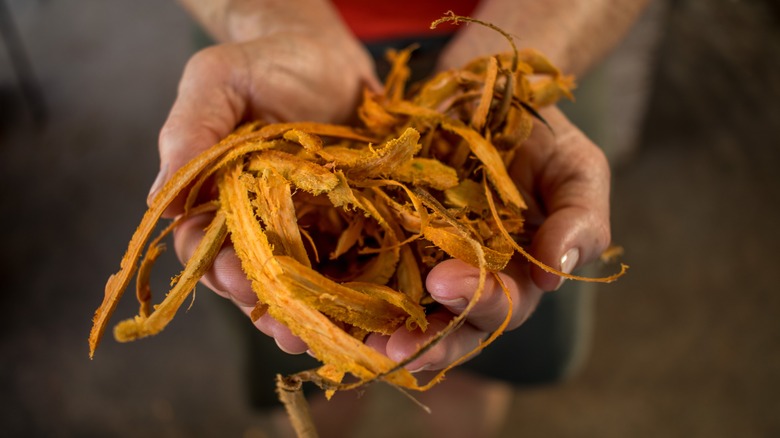Garden Trees, Shrubs & Vines
Will Ford
Several varieties of cinnamon trees produce edible cinnamon: Cinnamomum verum, Cinnamomum cassia, and Cinnamomum loureirii. Each has a slightly different yet distinct aroma and flavor, but all make wonderful additions to the kitchen. You may even be pleased to learn that there are unexpected uses for cinnamon in other areas of your home as well. Once your tree is at least two years old, it is safe and mature enough to harvest cinnamon for your culinary or aromatic needs.
To begin the harvesting process, carefully select a branch that is at least half an inch in diameter. Using a sharp knife, make a vertical cut along the length of the branch. Be cautious not to damage the rest of the tree while making the incision. Next, gently peel or scrape off the outer bark from the branch. The outer bark is usually rough and brown in color while the inside layer will be orange or yellow.
Once the inner bark is exposed, carefully scrape it off from the branch using a knife. Take care to remove the bark in long, continuous strips to preserve its quality, and stop when you see the inner core. After harvesting the cinnamon bark, it is important to dry it properly. Lay the strips of bark in a well-ventilated area. Allow them to dry for several days until they become brittle and tightly rolled. Finally, store the dried cinnamon bark in an airtight container to maintain its freshness and flavor. You can use the cinnamon bark as a whole or grind it into a fine powder for culinary purposes.
How to care for cinnamon plants

Photostory Jika/Shutterstock
Though they are native only to tropical climates, cinnamon trees also make wonderful ornamental houseplants that can produce bark for harvesting cinnamon spice. In order to be able to harvest cinnamon from the trees, they need special care as they are somewhat cool-tolerant but much prefer humid, tropical weather.
To begin growing your cinnamon tree in hopes of harvesting cinnamon, start by selecting a large container, at least 18 inches across and 20 inches in depth to accommodate the large plant, ensuring it has good drainage to prevent waterlogged roots. Choose a well-draining potting mix that mimics the cinnamon tree’s native soil conditions, which should be slightly acidic and rich in organic matter. Cinnamon trees thrive in bright, full sunlight, so place your tree near a west-facing window. They prefer humid, warm environments with temperatures near 80 degrees Fahrenheit. While that may not always be possible, they will die if temperatures drop below 40 degrees Fahrenheit.
Water your cinnamon tree moderately, allowing the top inch of soil to dry out between waterings. Keep the soil evenly moist, but avoid overwatering, which can lead to root rot. During spring and summer, fertilize with a balanced, slow-release water-soluble fertilizer. Additionally, pruning is essential for shaping the tree and encouraging bushier growth. Trim back leggy or dying branches, but be cautious not to remove more than one-third of the tree’s foliage at once.